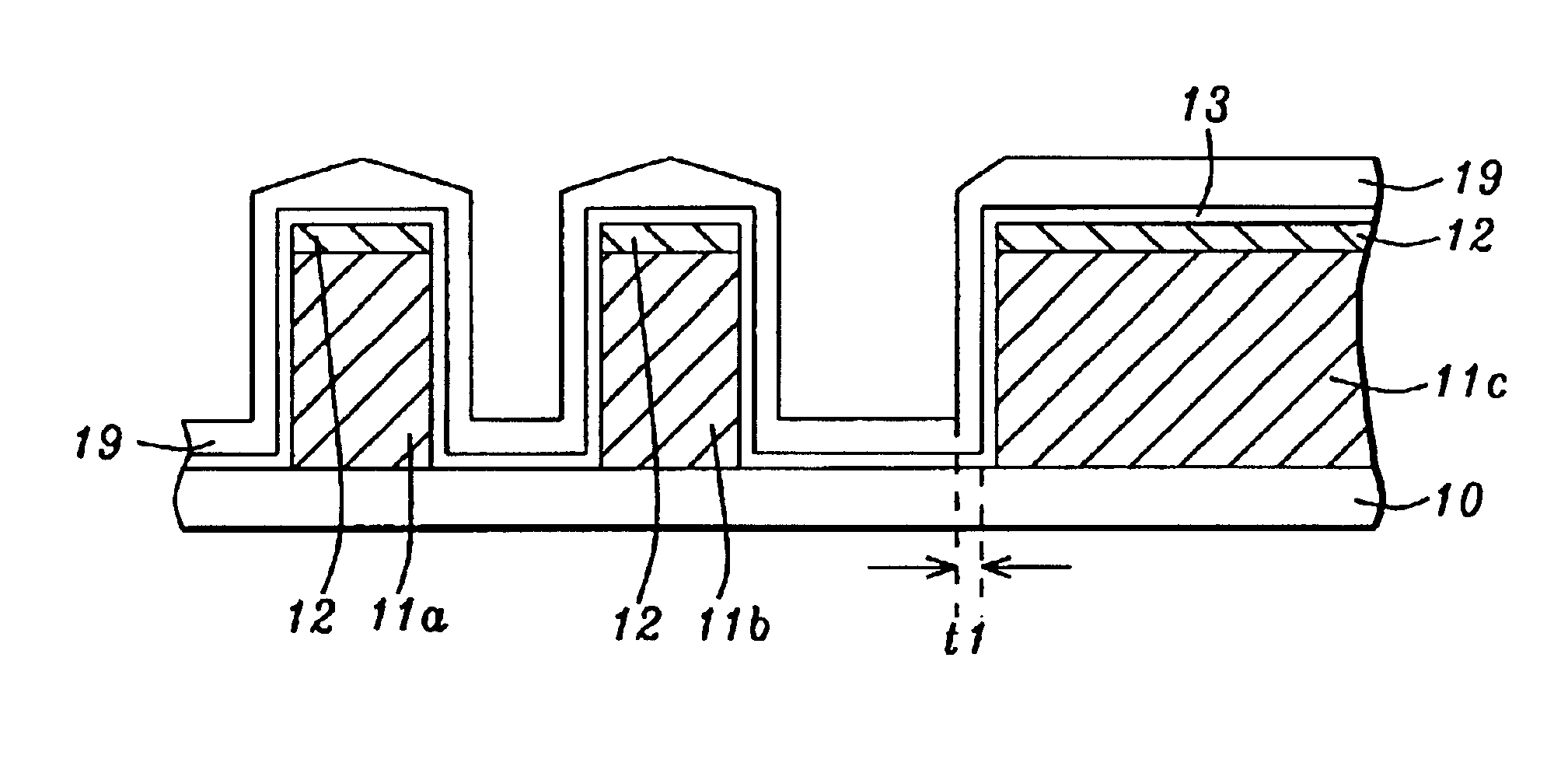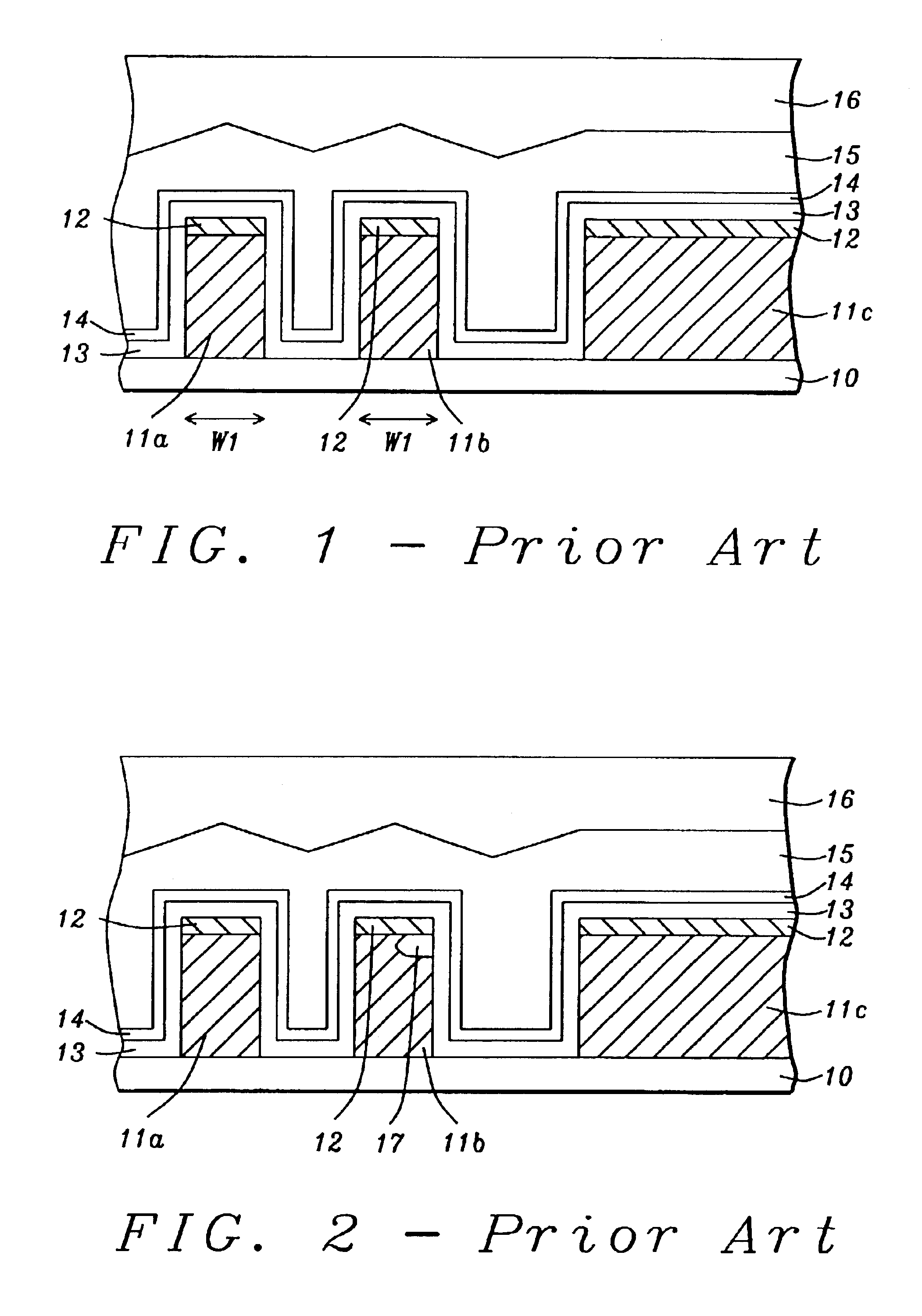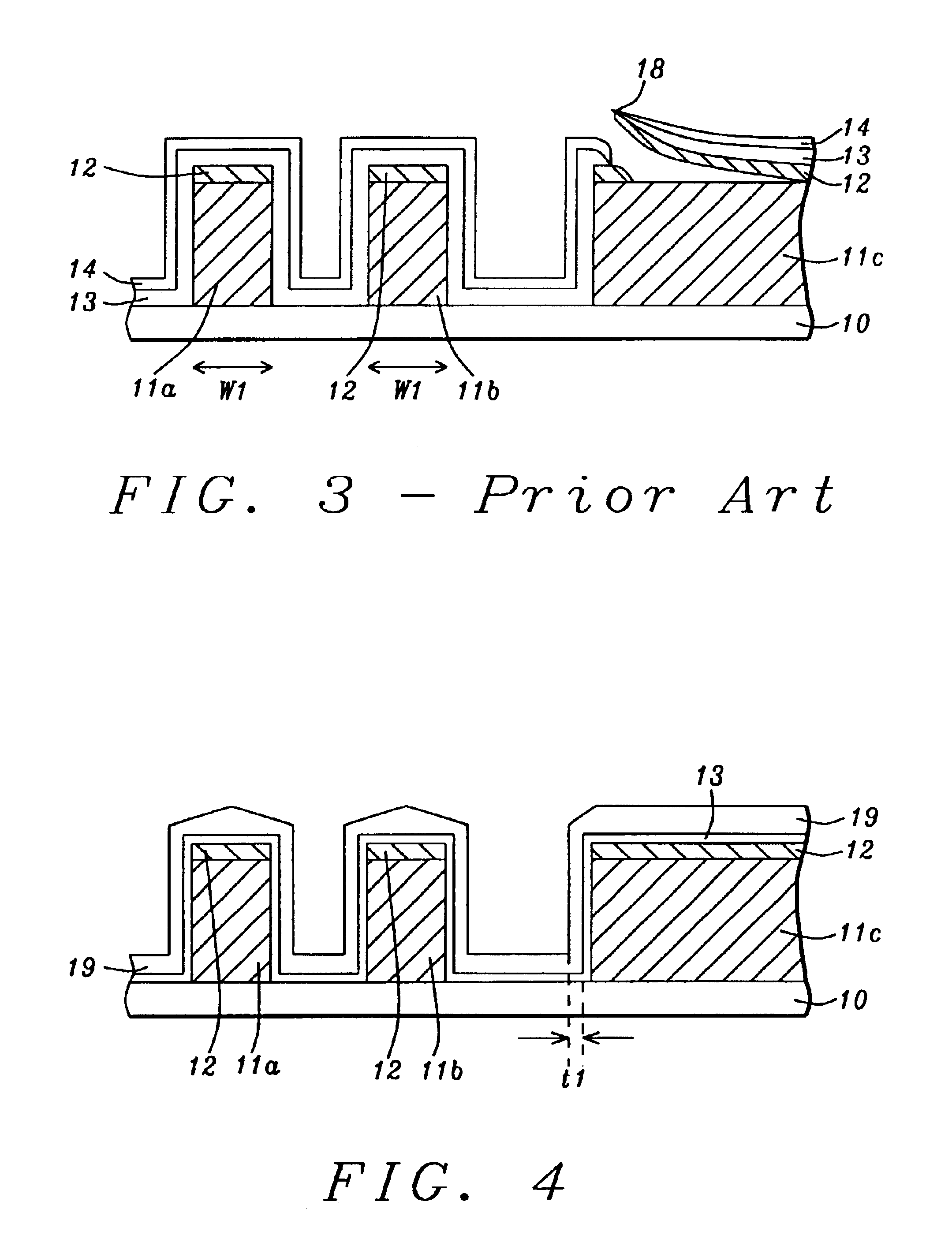Solution for FSG induced metal corrosion & metal peeling defects with extra bias liner and smooth RF bias ramp up
- Summary
- Abstract
- Description
- Claims
- Application Information
AI Technical Summary
Benefits of technology
Problems solved by technology
Method used
Image
Examples
Embodiment Construction
[0021]The present invention is particularly useful for forming an oxide liner over a metal pattern and an intermetal dielectric layer in a multi-level metallization scheme.
[0022]Referring to FIG. 1, in related art practiced by the inventors, a substrate 10 is provided with metal lines 11a, 11b, 11c consisting of an Al / Cu alloy formed thereon. Substrate 10 typically has active and passive devices that are not shown in order to simplify the drawing. A TiN anti-reflective layer 12 is formed on metal lines 11a, 11b, 11c by a conventional method and has a thickness in the range of about 3000 to 10000 Angstroms. Next, a PECVD method is used to deposit a silicon rich oxide (SRO) liner 13 having a thickness of about 300 Angstroms. A HDP CVD process without an RF bias forms an undoped silicon glass (USG) liner 14 that is about 200 Angstroms thick. In the same process chamber, a FSG layer 15 with a thickness between about 4000 and 20000 Angstroms is deposited by a HDP CVD process that has goo...
PUM
| Property | Measurement | Unit |
|---|---|---|
| Temperature | aaaaa | aaaaa |
| Temperature | aaaaa | aaaaa |
| Time | aaaaa | aaaaa |
Abstract
Description
Claims
Application Information
 Login to View More
Login to View More - Generate Ideas
- Intellectual Property
- Life Sciences
- Materials
- Tech Scout
- Unparalleled Data Quality
- Higher Quality Content
- 60% Fewer Hallucinations
Browse by: Latest US Patents, China's latest patents, Technical Efficacy Thesaurus, Application Domain, Technology Topic, Popular Technical Reports.
© 2025 PatSnap. All rights reserved.Legal|Privacy policy|Modern Slavery Act Transparency Statement|Sitemap|About US| Contact US: help@patsnap.com



